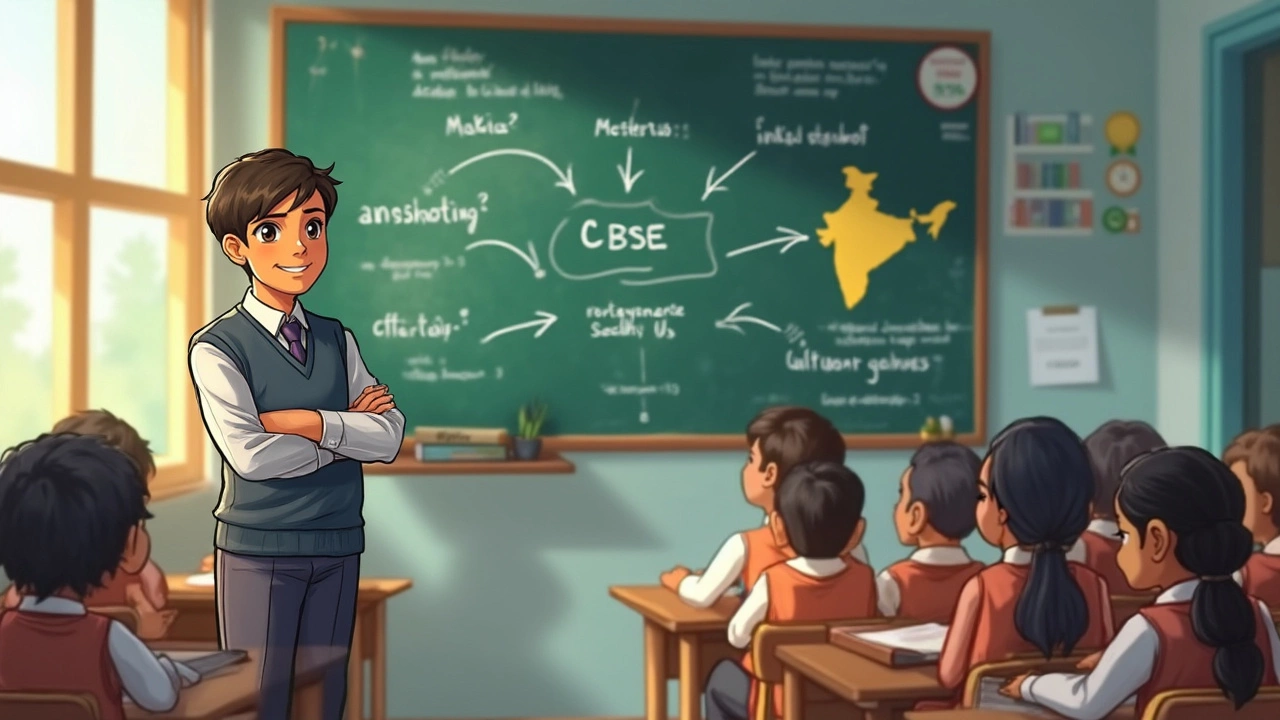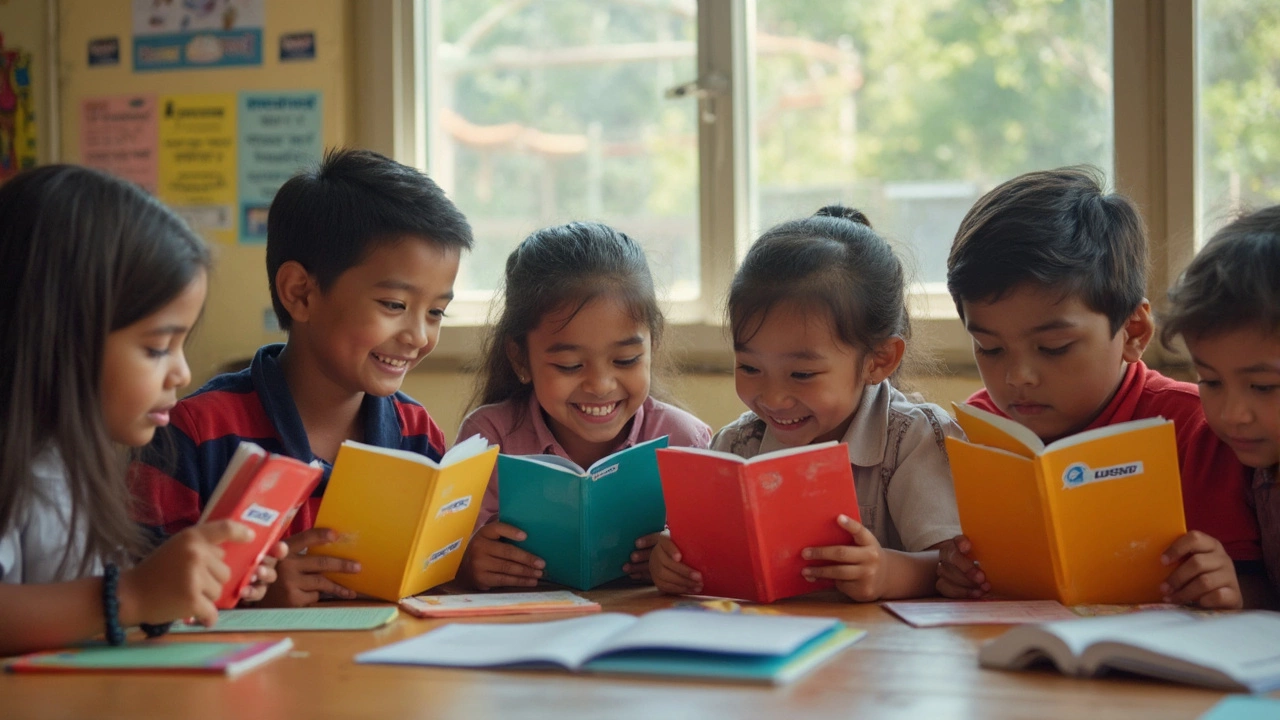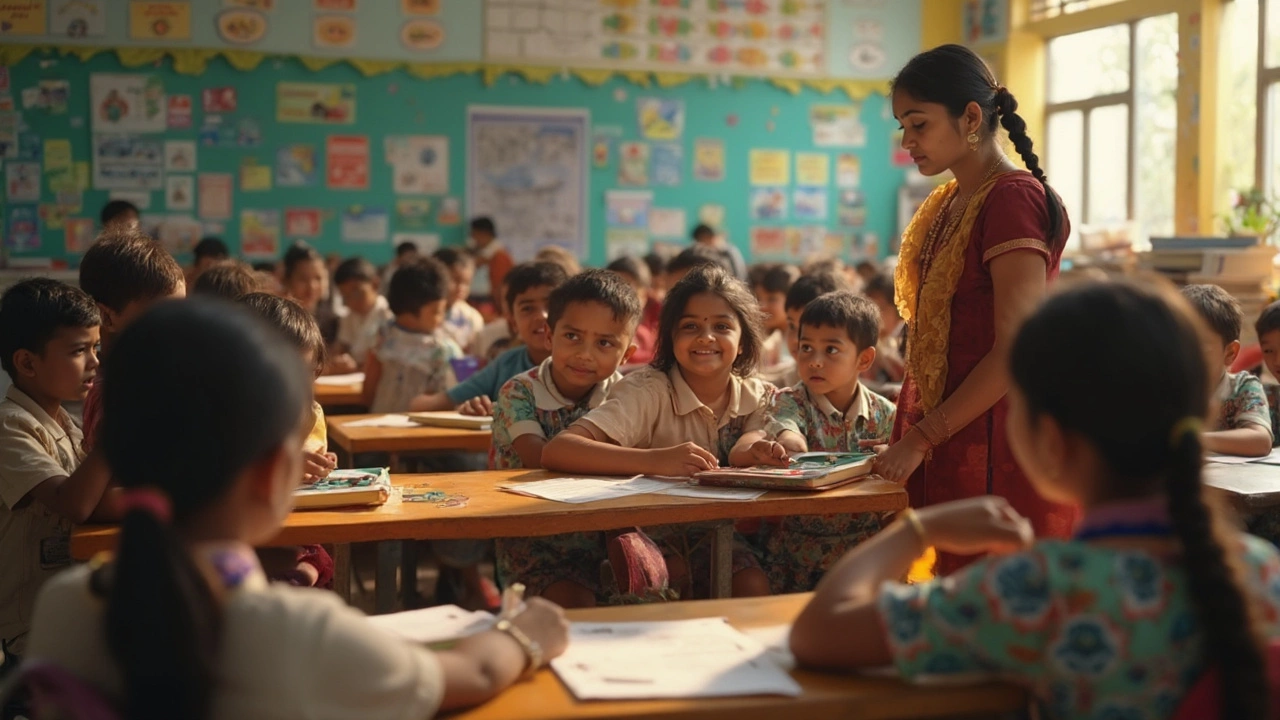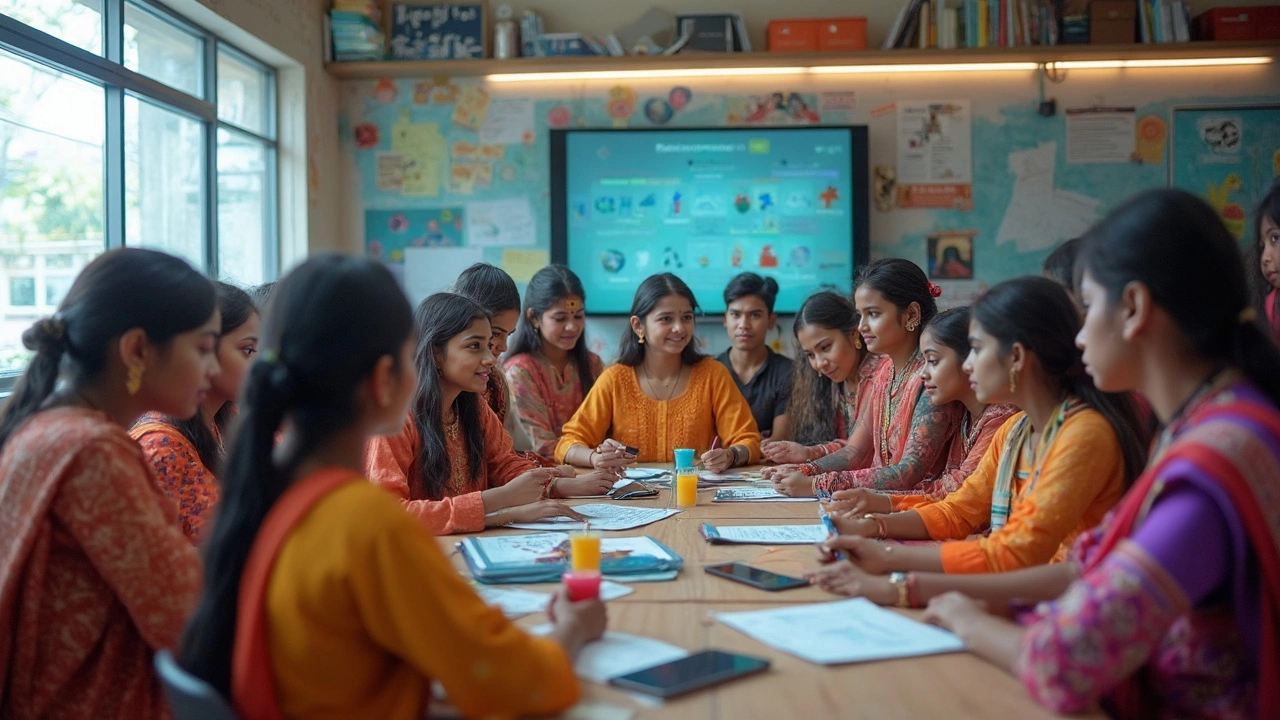CBSE pops up in almost every conversation about school admissions. There’s a reason for that—it isn’t just hype. Folks often prefer the Central Board of Secondary Education because it’s built for students who want options, not headaches. The curriculum doesn’t drown you in details, but it sure does prep you for what comes next, especially with national exams like NEET or JEE.
Worried about switching schools? CBSE gives you peace of mind if job transfers are a thing in your family. It has schools in almost every corner of India, plus a bunch abroad. That means less hassle if you’re on the move. And guess what? Colleges and employers recognize the CBSE certificate everywhere. Not just in big cities—the reach is massive.
- CBSE Syllabus: What Sets It Apart
- How CBSE Eases Competitive Exam Prep
- Accessibility and Recognition Across India
- Parental and Student Experiences
- Should You Choose CBSE? Practical Tips
CBSE Syllabus: What Sets It Apart
Ever wonder why the CBSE syllabus is always the hot topic? What makes it so different from others? The first thing people notice is how it’s structured. You won’t find pages and pages of old, outdated content here. CBSE constantly reviews and updates the material, so students get what’s relevant today, not what mattered decades ago.
Look at the subjects—it’s not just about rote learning. CBSE tries to mix in practical stuff, like science experiments and value-based questions. English, math, social science, and science all come with clear concepts and simple breakdowns. Everyone talks about how it balances theory and practicals, which honestly helps when exams hit. No last-minute surprises.
CBSE also keeps textbooks pretty lean. The focus is on understanding basics, not cramming hard facts. That’s a game-changer for students who plan to appear in national competitive exams—since these tests use the CBSE syllabus as their base. Students aren’t left scratching their heads over content they’ll never see again.
If you’re curious about numbers, check this out:
| Aspect | CBSE | Other Boards |
|---|---|---|
| Updated Syllabus Frequency | Every 2-3 years | Every 5+ years |
| Compulsory Subjects | 5 major, 1-2 electives | Varies, often region-based |
| Textbook Source | NCERT | Multiple options, uneven quality |
One more thing, the CBSE board uses NCERT textbooks for everything. These books are easy to follow and are accepted across competitive exams and even government recruitments. So, if you’re looking for something streamlined and reliable, CBSE checks a lot of boxes.
How CBSE Eases Competitive Exam Prep
If you plan to go for big exams like NEET, JEE, or even UPSC in the future, you’ll notice one thing: the question patterns and topics often copy straight from CBSE textbooks. That’s not a coincidence. The CBSE syllabus is tightly aligned with what’s asked in these national-level competitive exams, so you’re not wasting time on stuff that never shows up in tests.
Here’s why CBSE gives you a real head-start:
- Textbooks by NCERT (used in CBSE) often become the holy grail for many competitive aspirants. Pretty much every coaching institute recommends sticking to NCERT books because 80-90% of exam questions, especially in medical and engineering entrances, come directly or indirectly from them.
- Concepts in the CBSE syllabus stress understanding, not just mugging up. Exams like JEE Main, NEET, and even Civil Services Prelims expect you to apply what you learn, not just remember facts. CBSE’s way of teaching builds that thinking from day one.
- It uses the same language and pattern you find in competitive exams. There’s less confusion switching from school to test prep.
Check out this quick comparison that says a lot about NCERT’s role in major exams:
| Exam Name | % Questions from NCERT/CBSE Content |
|---|---|
| NEET (Medical) | ~85% |
| JEE Main (Engineering) | ~65% |
| CUET (Central Univ. Entrance) | ~80% |
Another thing—CBSE schools start test-oriented preparation early. Weekly tests, MCQs, and practice exams are not there just to pile on extra stress, but to make sure you don’t freeze up on the big day. It’s practical training in safe territory.
If you’re worried about juggling board studies and competitive coaching, CBSE’s exam calendar also matches the timelines of major national tests, so students can focus without last-minute panic. You won’t have crazy overlaps or surprise holidays either.

Accessibility and Recognition Across India
If you look into the reach of CBSE schools, the numbers are huge. Right now, over 28,000 schools in India and abroad use the CBSE syllabus. You’ll find these schools everywhere—from big metros like Delhi and Mumbai to small towns and even remote areas in the northeast. That coverage can be a lifesaver if your family moves around for work, military, or central government jobs.
Admissions get a lot simpler too. If your child is shifting schools within India, a CBSE transfer is smooth because the curriculum stays pretty much the same. No worrying about major gaps or mismatches. For parents who work abroad or plan to, around 240 international CBSE-affiliated schools outside India use the same structure—so you can keep your kid’s schooling consistent, from Sharjah to Singapore.
Big thing is, a CBSE certificate is never questioned by colleges and recruiters. It’s accepted across universities, engineering institutes, and even outside India. Some job applications—even in state government—prefer or require a CBSE mark sheet because of its standardization. The board’s English-medium focus and its regular updates to the CBSE syllabus match what most competitive exams need, making students ready and flexible.
| Region | Number of CBSE Schools (Approx.) |
|---|---|
| North India | 10,000+ |
| South India | 8,000+ |
| East & Northeast | 4,000+ |
| West & Central | 5,500+ |
| Overseas | 240+ |
So, if you want about zero drama with recognition, the CBSE curriculum is a solid bet. Its reach makes moving schools or applying for higher studies hassle-free, and no one raises an eyebrow at a CBSE transcript—whether you’re in Patna or Paris.
Parental and Student Experiences
Talk to parents whose kids study under the CBSE system and you’ll usually hear a sigh of relief. Many say one of the best things is how the syllabus is laid out. It’s clear, step-by-step, and the books rarely go off on tangents. This means kids aren’t as stressed about rote learning or cramming. Parents mention that the CBSE curriculum is easier to help with at home, too, because CBSE releases simple guides and sample papers before the big exams—no scrambling for last-minute study material.
Students also appreciate that CBSE exam questions often focus on concepts, not just memorization. If your kid is aiming for competitive exams like NEET or JEE, the overlap with CBSE content can’t be beat. In fact, according to a 2024 mock exam analysis, about 70% of the questions in major national tests are based on NCERT, the textbooks recommended by CBSE. That’s a pretty clear advantage.
Mobility is a real-life saver as well. One parent shared how her daughter's transfer from Hyderabad to Delhi mid-year was smooth because both schools followed the same CBSE syllabus. No repeating topics or jumping to completely new material—the transition was painless. For families with government or transferable jobs, this brings huge relief.
Here’s a quick look at what parents and students often highlight about the CBSE experience:
- Easy access to sample papers and past exam questions
- Curriculum syncs with popular competitive exams
- Seamless school transfers across India (and abroad!)
- Plenty of co-curricular activities without academic overload
CBSE isn’t just about marks; it aims for a bit of balance. A lot of schools have added sports, coding clubs, and hands-on activities alongside the main subjects, following updated guidelines. Students often feel there’s room for life outside textbooks—a big plus in well-rated CBSE schools.

Should You Choose CBSE? Practical Tips
Thinking about picking the CBSE syllabus for your kid? Don’t just follow the crowd—figure out if it actually fits your needs. There’s a lot to consider, and sometimes what’s popular isn’t always the best for everyone. Here’s how you can decide:
- Is your family likely to move? CBSE schools are everywhere in India, so if transfers or relocations could happen, this board saves you stress. Your child can shift with little trouble since the curriculum stays the same.
- Competitive exams on the radar? The CBSE syllabus lines up closely with entrance exams like JEE, NEET, and even a bunch of government recruitment tests. In fact, around 75% of questions in NEET 2024 were directly from CBSE books. That’s quite the head start for exam prep.
- Do you want balanced learning? CBSE isn’t just about rote learning. It packs in practicals, projects, and activity-based tests—especially for core subjects like Science and Math. This means less mugging up, more actual understanding.
- English-medium focus? If you want your child to be comfortable with English, almost every CBSE school teaches in English, making it easier for future higher studies or international moves.
- Planning for studies abroad? Many schools in the UAE, Singapore, and other countries offer the CBSE syllabus. This opens more options if your family ever moves overseas.
At the same time, some students find CBSE’s assessment style a bit too focused on final exams. The grading system is fair, but it does mean regular practice at home, especially close to board exams. Here’s a quick peek at pass percentages for the last 3 years, as tracked by CBSE itself:
| Year | Class 10 Pass % | Class 12 Pass % |
|---|---|---|
| 2022 | 94.4 | 92.7 |
| 2023 | 93.1 | 87.3 |
| 2024 | 93.6 | 87.9 |
Here are some quick tips to make sure CBSE is right for you:
- Talk to seniors or parents of older students in your city—you’ll get real talk, not just brochures.
- Visit the CBSE’s official website and sample question papers to see what students actually study.
- If your child has special interests (sports, music, art), check if the school offers solid co-curricular options alongside the CBSE syllabus.
- Ask the school about support for stress—they often offer counseling, since CBSE exams can be intense.
Bottom line? Want flexibility, consistency, and a boost in entrance exam prep? CBSE is tough to beat. But make sure it matches your family's goals before signing up.



